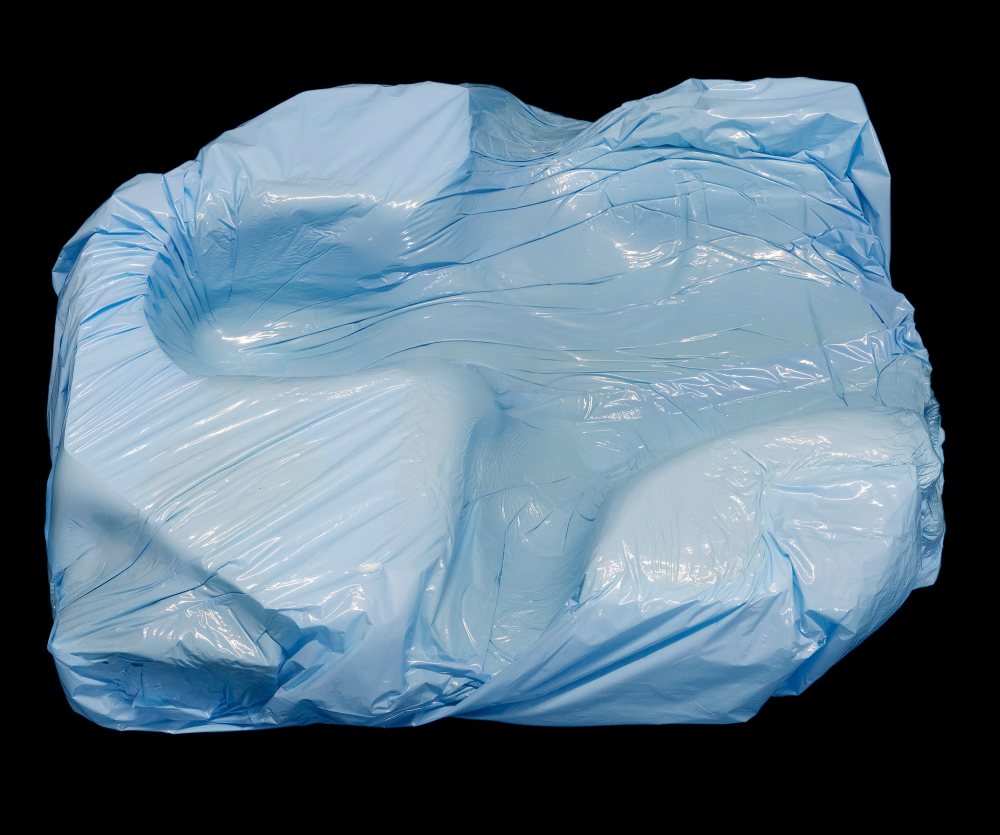STEP-BY-STEP INSTRUCTIONS
Safety First!
Always practice safety for your patients and staff. Wear protective gloves, smock and eye protection. Have patient remove jewelry before making forms. Always follow directions!
Comfort Your Patient!
Tell your patient they must lay still for 15 minutes while the foam rises around them. It will feel comfortably warm as it rises and hardens in the position they will need to hold for treatment.
Each kit includes an anatomical shell, 2 sets of foaming agents, and a special 7 ft. blue polyform bag.
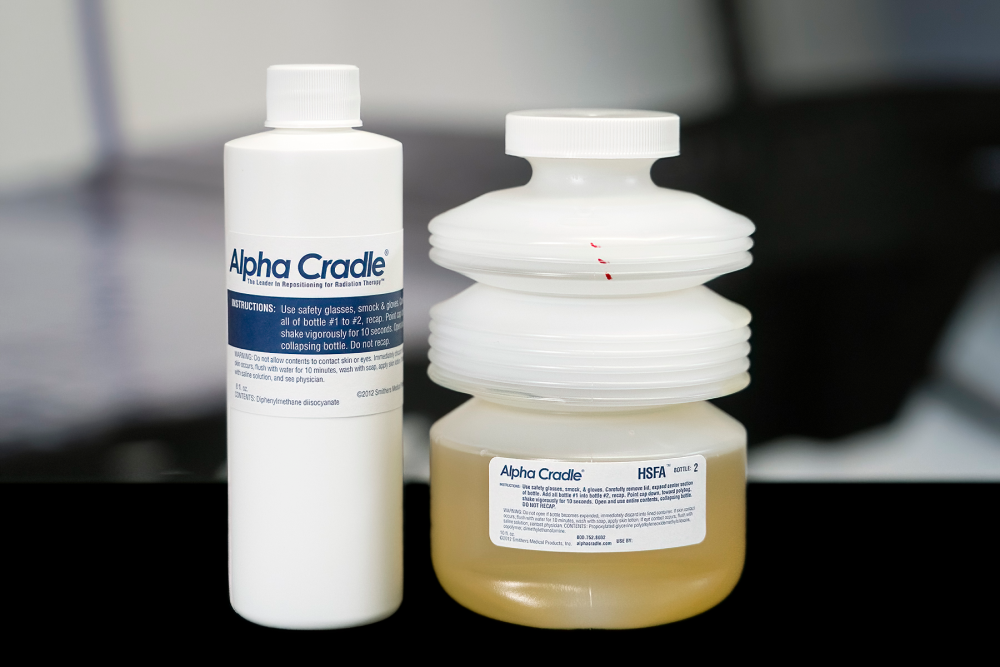 Special sets of foam are specifically designed for the form being used. Custom, hand made PVC bags are also available for more precise anatomical immobilization and repositioning.
Special sets of foam are specifically designed for the form being used. Custom, hand made PVC bags are also available for more precise anatomical immobilization and repositioning.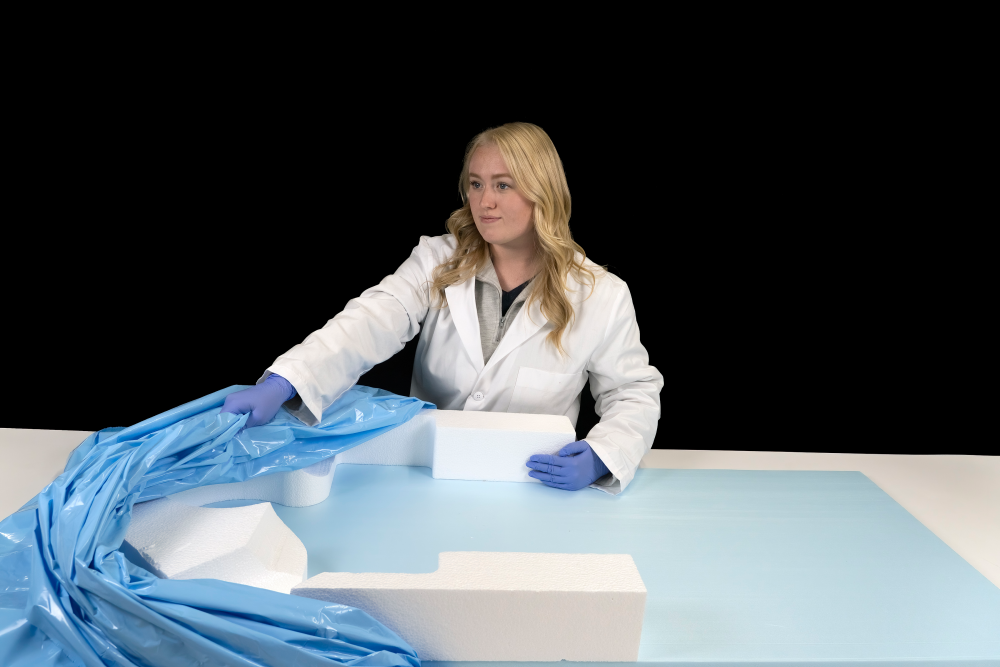 A 15-degree wedge may accompany form for breast patients. It is easily removed if not needed.
A 15-degree wedge may accompany form for breast patients. It is easily removed if not needed.It’s Easy to Make a Head & Shoulder Modified Form!
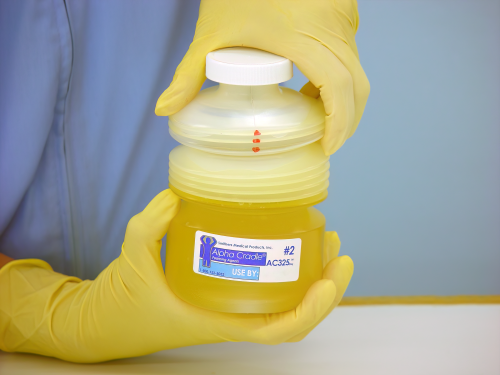 1. Make sure the top 3 red-marked ribs remain collapsed as you remove the cap and expand the center portion of the bottle.
1. Make sure the top 3 red-marked ribs remain collapsed as you remove the cap and expand the center portion of the bottle.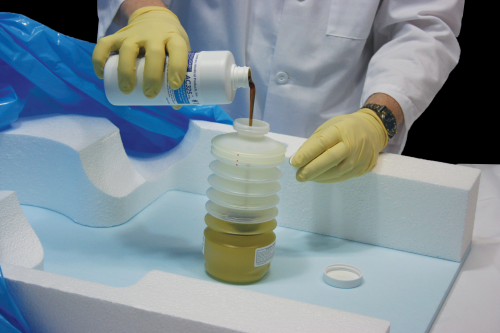 2. Carefully pour the entire contents of bottle #1 into bottle #2, discarding bottle #1 into a leakproof container.
2. Carefully pour the entire contents of bottle #1 into bottle #2, discarding bottle #1 into a leakproof container.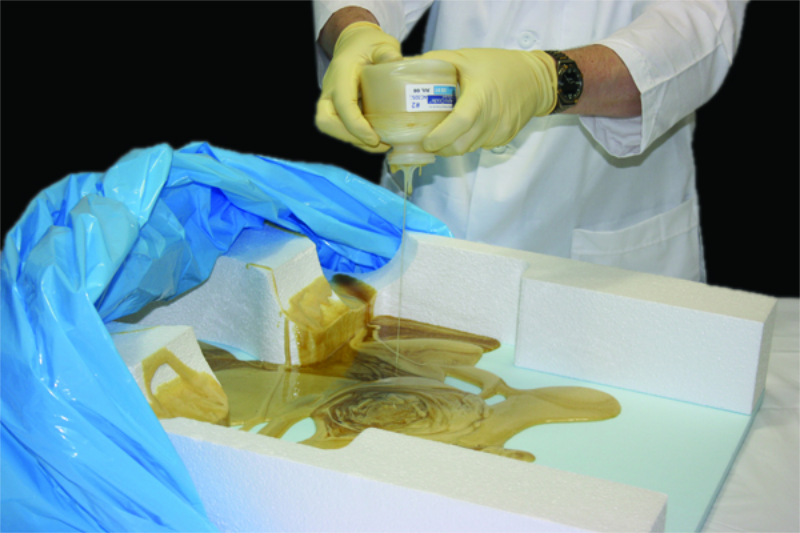 3. Recap the bottle and point it down inside the bag toward the base, away from everyone. The bottle must be shaken vigorously. Shake the bottle for only ten timed seconds and remove the cap immediately. Pour the entire mixture along the edges inside the form as shown. Make sure you also pour the foam along the cutout areas for the arms and forearms as needed. Collapse the bottle and squeeze all of the foam out of the bottle. Dispose of the bottle in a leak-proof container.
3. Recap the bottle and point it down inside the bag toward the base, away from everyone. The bottle must be shaken vigorously. Shake the bottle for only ten timed seconds and remove the cap immediately. Pour the entire mixture along the edges inside the form as shown. Make sure you also pour the foam along the cutout areas for the arms and forearms as needed. Collapse the bottle and squeeze all of the foam out of the bottle. Dispose of the bottle in a leak-proof container.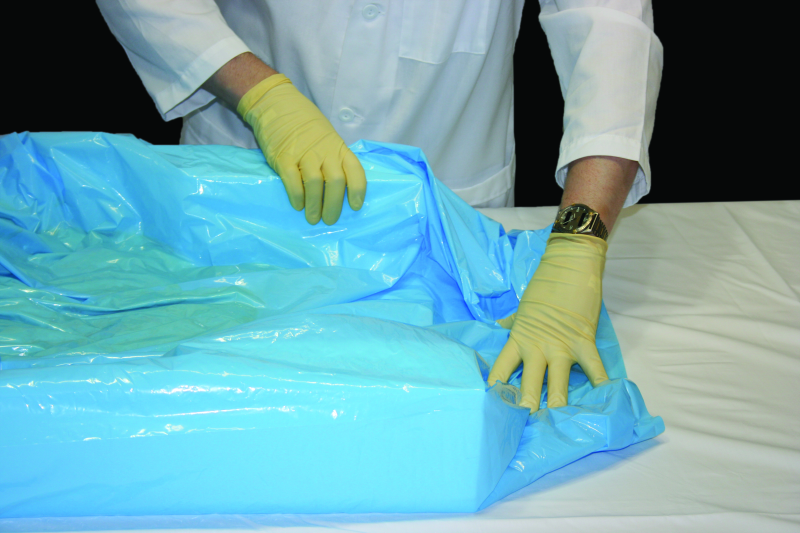 4. Press the bag down, against the areas of foam. This will keep foam from running off the areas.
4. Press the bag down, against the areas of foam. This will keep foam from running off the areas. Carefully fold the ends of the bag inward and remove as much air as you can without pushing the foam out.
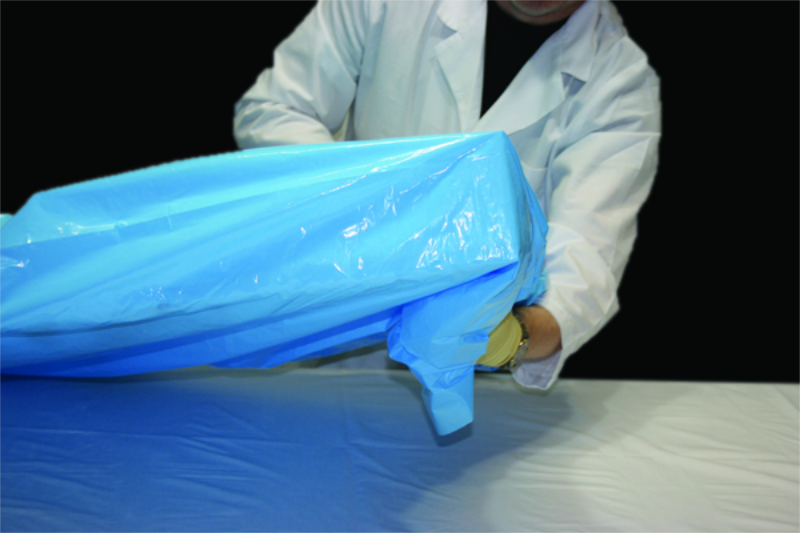
5. Carefully lift the end of the form and tuck the folded bag underneath to keep the foam from leaking out of the end of the bag.
Spread the rising foam evenly around the form.
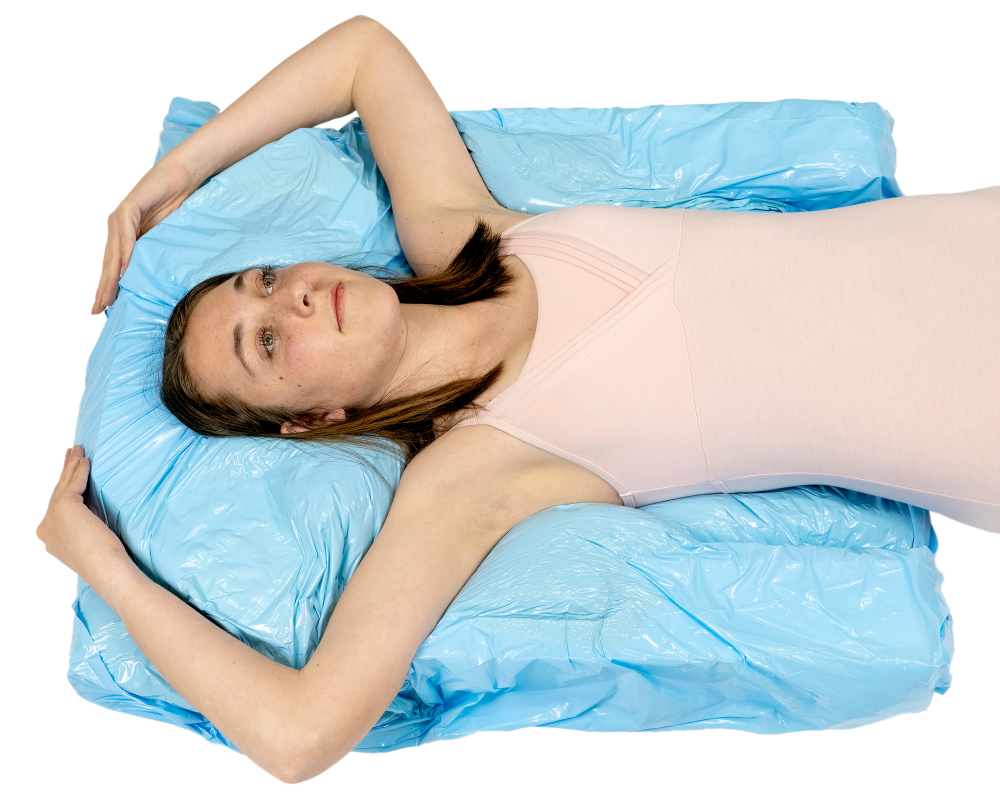 6. Place patient in set-up position. Press the bag down, against the areas of rising foam. After 15 minutes, the foam should feel cool to the touch. Carefully assist your patient out of their form.
6. Place patient in set-up position. Press the bag down, against the areas of rising foam. After 15 minutes, the foam should feel cool to the touch. Carefully assist your patient out of their form. The completed form is now ready for use.
ALPHA CRADLE® BRAND PRODUCTS HELPFUL HINTS
CREATING TIGHT, SECURE FORMS: As the foam begins to rise, you must inform the patient that the foam can actually lift heads and extremities out of the foam. If this happens, instruct the patient to remain motionless as you press the patient deep into the foam in the desired treatment set-up position. Do not let the patient move. Keep constant pressure on the patient’s anatomy that rises out of the foam, applying gentle yet firm pressure.
The form is useless unless you make a deep impression of the patient in the desired set-up position. This may mean putting pressure on top of the patient’s shoulders, keeping them deep in the form, allowing the foam to rise to the top of the form.
Foam that rises above the white form is useless foam. It is foam that can be diverted to another area where more foam may be needed or it can be used to make a tight fitting mold by pressing it down and holding it down for several minutes, until the form begins to cool.
CURING EACH MOLD: It is critical that the patient does not move for a full 15 minutes to allow the form to harden properly. As the form hardens, you can feel it cool to room temperature within 15 minutes from the starting point (depending upon temperature and atmospheric conditions in the room). Do not allow the patient to get up until the cradle is cool (room temperature) to the touch. If the area underneath the patient is still warm, allow it to cool and harden properly before use. This will result in a secure, comfortable tool to quickly reposition your patient each time they come in for treatment.
